-
 Bitcoin
Bitcoin $84,800.7048
2.32% -
 Ethereum
Ethereum $1,882.5584
2.87% -
 Tether USDt
Tether USDt $1.0000
0.01% -
 XRP
XRP $2.0968
-0.03% -
 BNB
BNB $603.2602
-0.62% -
 Solana
Solana $124.5532
-0.44% -
 USDC
USDC $0.9999
-0.02% -
 Dogecoin
Dogecoin $0.1707
1.90% -
 Cardano
Cardano $0.6689
0.47% -
 TRON
TRON $0.2384
0.86% -
 Toncoin
Toncoin $4.0121
-3.28% -
 Chainlink
Chainlink $13.7734
0.97% -
 UNUS SED LEO
UNUS SED LEO $9.4100
2.89% -
 Stellar
Stellar $0.2672
0.86% -
 Avalanche
Avalanche $19.2693
1.92% -
 Sui
Sui $2.3662
2.82% -
 Shiba Inu
Shiba Inu $0.0...01237
-2.05% -
 Hedera
Hedera $0.1657
1.14% -
 Polkadot
Polkadot $4.0848
0.85% -
 Litecoin
Litecoin $82.9308
-0.63% -
 MANTRA
MANTRA $6.2006
-1.38% -
 Bitcoin Cash
Bitcoin Cash $304.9806
0.27% -
 Bitget Token
Bitget Token $4.5883
-0.15% -
 Dai
Dai $1.0001
0.02% -
 Ethena USDe
Ethena USDe $0.9998
-0.01% -
 Pi
Pi $0.6918
-2.64% -
 Hyperliquid
Hyperliquid $13.0896
-1.19% -
 Monero
Monero $218.5433
0.66% -
 Uniswap
Uniswap $6.1491
2.50% -
 Aptos
Aptos $5.2452
-0.95%
What is the difference between mining machine mining that can earn 2,000 yuan a day and ASIC mining?
High-earning mining machines earning 2,000 yuan daily likely use many ASICs, targeting less competitive cryptocurrencies, with significant initial investment and operational costs.
Mar 31, 2025 at 08:56 pm

Understanding High-Earning Mining Machines and ASICs
The claim of a mining machine earning 2,000 yuan (approximately $280 USD) daily is a bold one, requiring careful examination. This level of profitability is highly dependent on several factors, and isn't necessarily indicative of a specific type of mining machine. It's crucial to understand that profitability fluctuates dramatically based on cryptocurrency price, network difficulty, and electricity costs. Let's explore the differences between such a high-earning setup and ASIC mining.
The phrase "mining machine" is broad. It can refer to various hardware, including ASICs (Application-Specific Integrated Circuits), FPGAs (Field-Programmable Gate Arrays), and even GPUs (Graphics Processing Units). However, achieving a daily profit of 2,000 yuan typically necessitates a significant investment in high-end, specialized hardware, likely ASICs designed for a specific cryptocurrency. This is because ASICs are optimized for a particular algorithm, maximizing their hashing power and efficiency. GPUs and FPGAs, while capable of mining, are generally less efficient and profitable for most cryptocurrencies.
ASIC mining, on the other hand, is a specific type of cryptocurrency mining that utilizes ASICs. These chips are designed solely for cryptocurrency mining, making them significantly more efficient than GPUs or FPGAs. ASIC miners are often the most profitable option for established, popular cryptocurrencies like Bitcoin. Their high upfront cost is often justified by their superior hashing power and lower energy consumption per unit of hashing power. The 2,000 yuan daily profit scenario likely involves a large-scale ASIC mining operation, possibly consisting of numerous high-end ASICs, strategically targeting a profitable cryptocurrency.
A key difference lies in the scalability and initial investment. Achieving a daily profit of 2,000 yuan likely requires a substantial initial investment in many ASIC miners. This is in contrast to smaller-scale mining operations using fewer, less powerful machines. The high earning potential is directly linked to the scale of the operation. A single, high-end ASIC miner might generate a significant profit, but it’s unlikely to reach 2,000 yuan daily without significant cryptocurrency price appreciation or exceptionally low electricity costs.
Another crucial distinction is the type of cryptocurrency mined. The 2,000 yuan daily profit machine might be targeting a less established cryptocurrency with a less competitive mining landscape. This allows for higher profitability per unit of hashing power, though it carries higher risk due to the volatility of smaller cryptocurrencies. Bitcoin mining with ASICs, while potentially highly profitable, faces significantly higher competition and network difficulty, making it harder to achieve such high daily returns.
The operational costs also play a significant role. Electricity consumption is a major expense in cryptocurrency mining. The daily profit of 2,000 yuan requires efficient cooling systems and access to inexpensive electricity. High electricity costs can easily erode profitability, rendering even the most powerful mining hardware unprofitable. The location of the mining operation is therefore a critical factor in determining its overall profitability.
Furthermore, the maintenance and upkeep of a large-scale mining operation are significant considerations. ASIC miners require cooling, ventilation, and regular maintenance to ensure optimal performance. Malfunctions or hardware failures can significantly impact profitability. A robust maintenance plan is essential for sustaining high daily earnings. This is especially true for a large-scale operation aiming for a 2,000 yuan daily return.
Let's delve into the specifics of setting up a high-earning mining operation. While the specifics vary greatly depending on the chosen cryptocurrency and hardware, certain steps are common.
- Research and Selection: Thoroughly research profitable cryptocurrencies and the most efficient ASIC miners for those coins. Consider factors like hashing power, energy efficiency, and price.
- Hardware Acquisition: Purchase the necessary ASIC miners. Consider buying in bulk to leverage potential discounts.
- Infrastructure Setup: Establish a suitable location with reliable power and efficient cooling systems. This might involve renting a dedicated space or building a custom mining facility.
- Software Configuration: Install and configure the necessary mining software for your chosen cryptocurrency. This often involves setting up mining pools to optimize profitability.
- Monitoring and Maintenance: Continuously monitor the performance of your mining operation and perform regular maintenance to prevent downtime and maximize profitability.
It's important to note that the profitability of mining is highly volatile. Changes in cryptocurrency prices, network difficulty, and electricity costs can significantly impact your daily earnings. The 2,000 yuan daily profit is not guaranteed and should be viewed as a potential outcome rather than a certainty.
Frequently Asked Questions
Q: Can I achieve a 2,000 yuan daily profit with a single ASIC miner?
A: Highly unlikely. Achieving such high daily profits typically requires a large-scale operation with numerous high-end ASIC miners, optimized for a specific, potentially less established, cryptocurrency. A single miner, even a high-end one, is unlikely to reach this level of profitability.
Q: What are the risks associated with aiming for such high daily profits?
A: Significant risks include the volatility of cryptocurrency prices, increasing network difficulty, rising electricity costs, and the potential for hardware malfunctions. The initial investment is also substantial, and there's no guarantee of consistent profitability.
Q: Are there any legal considerations for large-scale cryptocurrency mining?
A: Yes, regulations regarding cryptocurrency mining vary significantly by location. It's crucial to research and comply with all applicable laws and regulations in your jurisdiction before embarking on a large-scale mining operation. This includes tax implications and potential licensing requirements.
Q: What are the alternatives to ASIC mining for achieving high profits?
A: While ASICs are generally the most efficient for established cryptocurrencies, exploring less competitive coins with different mining algorithms (potentially using GPUs or FPGAs) might offer alternative paths to higher profitability, though with increased risk. However, reaching a 2,000 yuan daily profit would still require a substantial investment and operational scale.
Disclaimer:info@kdj.com
The information provided is not trading advice. kdj.com does not assume any responsibility for any investments made based on the information provided in this article. Cryptocurrencies are highly volatile and it is highly recommended that you invest with caution after thorough research!
If you believe that the content used on this website infringes your copyright, please contact us immediately (info@kdj.com) and we will delete it promptly.
- Mastercard Launches Multi-Token Network (MTN) to Connect Traditional Finance and Digital Assets
- 2025-04-02 10:35:12
- LCX is set to participate in the Paris Blockchain Week, which commences on April 8th in Paris.
- 2025-04-02 10:35:12
- FIO Protocol's head of marketing, Marie Grig, will participate in Paris Blockchain Week
- 2025-04-02 10:30:12
- DTX Exchange (DTX) Token Price Prediction: Will the DTX Presale Ever End?
- 2025-04-02 10:30:12
- Binance's Routine Contract Rule Adjustment Accidentally Exposed the Most Vulnerable Pimple in the Crypto Market
- 2025-04-02 10:25:12
- 3 To 6 Months Old Bitcoin Buyers Have Been Holding Strong Recently, Showing Conviction Not Capitulation
- 2025-04-02 10:25:12
Related knowledge
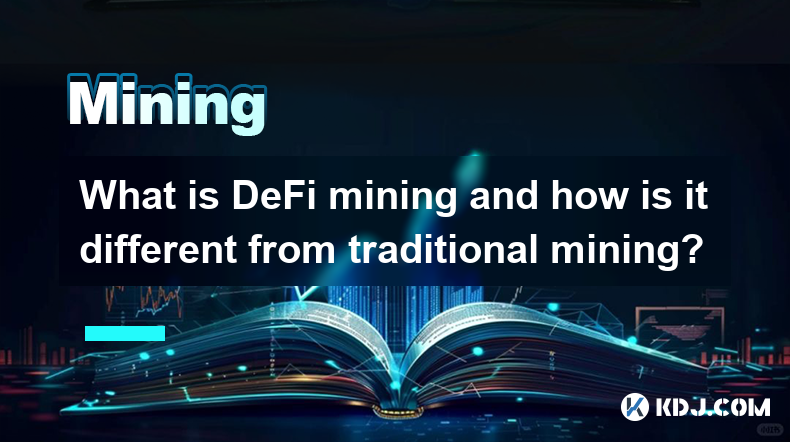
What is DeFi mining and how is it different from traditional mining?
Apr 02,2025 at 09:50am
DeFi mining, also known as yield farming or liquidity mining, is a process within the decentralized finance (DeFi) ecosystem where users provide liquidity to decentralized platforms in exchange for rewards. Unlike traditional mining, which involves solving complex mathematical problems to validate transactions and add them to a blockchain, DeFi mining f...
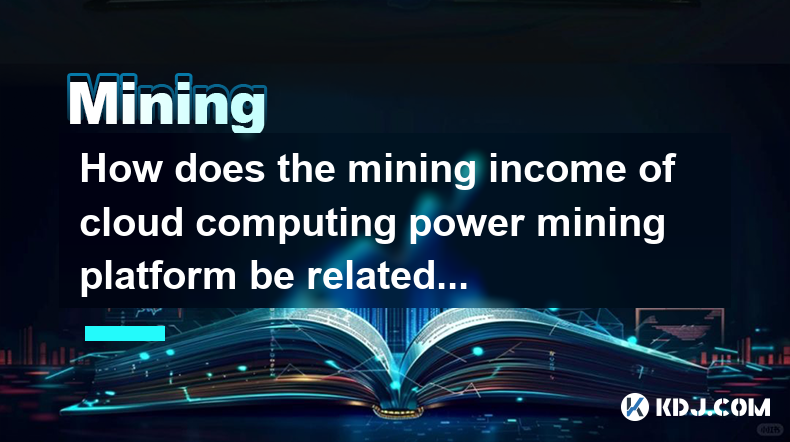
How does the mining income of cloud computing power mining platform be related to mining pool allocation?
Apr 02,2025 at 01:56am
The relationship between the mining income of a cloud computing power mining platform and the allocation of mining pools is a crucial aspect of cryptocurrency mining. Mining income is influenced by various factors such as the efficiency of the mining hardware, electricity costs, and the specific cryptocurrency being mined. However, the allocation of min...
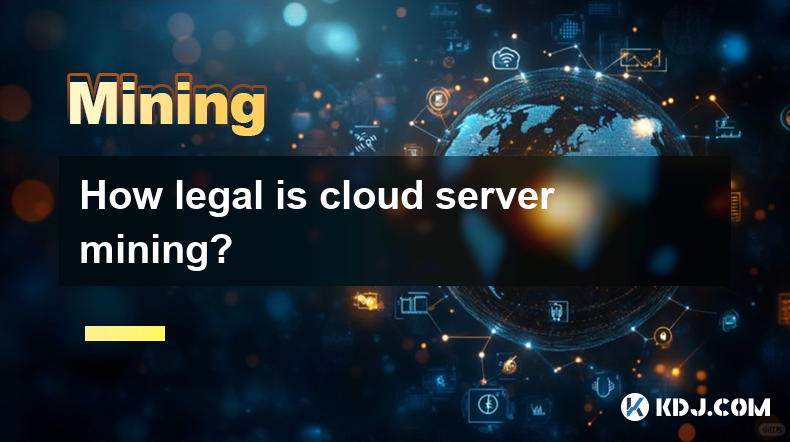
How legal is cloud server mining?
Apr 01,2025 at 08:08am
Cloud server mining has become an increasingly popular method for individuals and companies to participate in cryptocurrency mining without the need for expensive hardware and high electricity costs. However, the legality of cloud server mining can be a complex issue, as it varies by jurisdiction and depends on several factors. This article will explore...
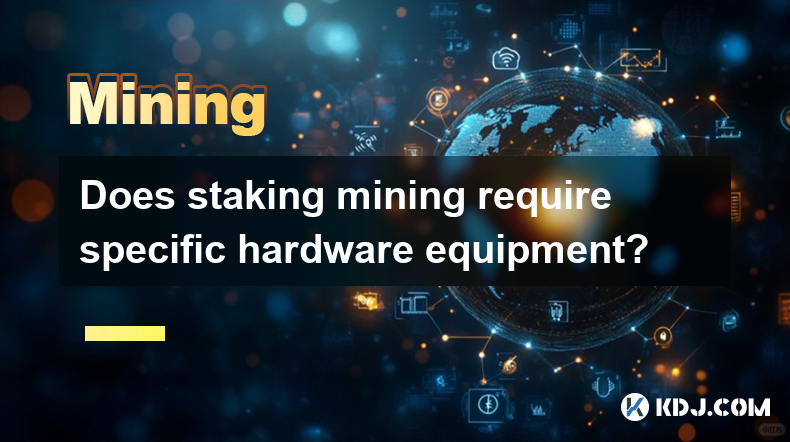
Does staking mining require specific hardware equipment?
Apr 02,2025 at 08:21am
Staking mining, often referred to simply as staking, is a process used by various cryptocurrencies to secure their networks and validate transactions. Unlike traditional mining, which often requires specialized hardware like ASICs (Application-Specific Integrated Circuits) or high-performance GPUs (Graphics Processing Units), staking typically does not ...
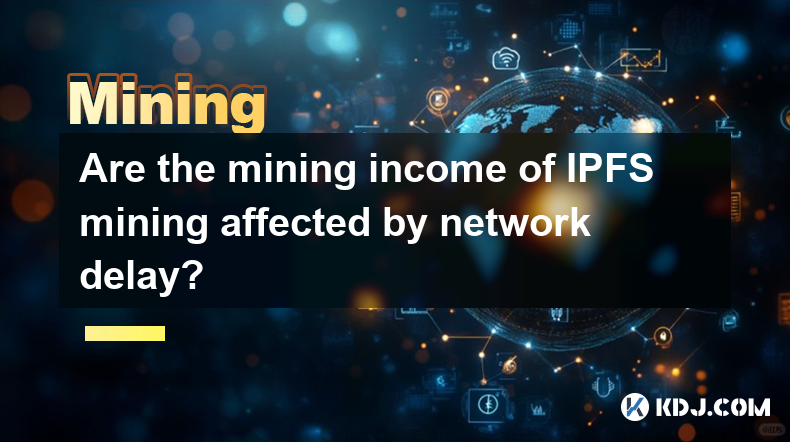
Are the mining income of IPFS mining affected by network delay?
Apr 01,2025 at 09:36pm
Are the Mining Incomes of IPFS Mining Affected by Network Delay? Understanding IPFS Mining and Network Delay's ImpactIPFS (InterPlanetary File System) mining, unlike Bitcoin mining, doesn't involve solving complex cryptographic puzzles. Instead, it focuses on providing storage and bandwidth to the network. Miners earn rewards for storing and sharing dat...
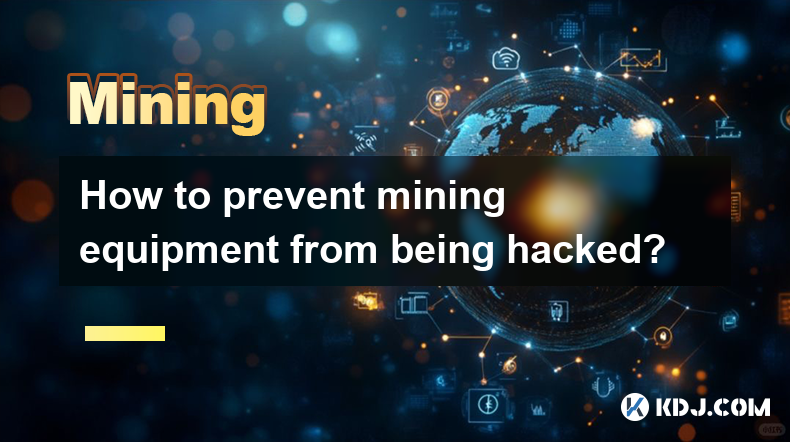
How to prevent mining equipment from being hacked?
Apr 01,2025 at 06:22am
Understanding the ThreatsCryptocurrency mining, while potentially lucrative, exposes your equipment to various cyber threats. These threats range from simple malware infections that steal your mining profits to sophisticated attacks that hijack your entire operation. Understanding these threats is the first step in effective protection. This includes r...

What is DeFi mining and how is it different from traditional mining?
Apr 02,2025 at 09:50am
DeFi mining, also known as yield farming or liquidity mining, is a process within the decentralized finance (DeFi) ecosystem where users provide liquidity to decentralized platforms in exchange for rewards. Unlike traditional mining, which involves solving complex mathematical problems to validate transactions and add them to a blockchain, DeFi mining f...

How does the mining income of cloud computing power mining platform be related to mining pool allocation?
Apr 02,2025 at 01:56am
The relationship between the mining income of a cloud computing power mining platform and the allocation of mining pools is a crucial aspect of cryptocurrency mining. Mining income is influenced by various factors such as the efficiency of the mining hardware, electricity costs, and the specific cryptocurrency being mined. However, the allocation of min...

How legal is cloud server mining?
Apr 01,2025 at 08:08am
Cloud server mining has become an increasingly popular method for individuals and companies to participate in cryptocurrency mining without the need for expensive hardware and high electricity costs. However, the legality of cloud server mining can be a complex issue, as it varies by jurisdiction and depends on several factors. This article will explore...

Does staking mining require specific hardware equipment?
Apr 02,2025 at 08:21am
Staking mining, often referred to simply as staking, is a process used by various cryptocurrencies to secure their networks and validate transactions. Unlike traditional mining, which often requires specialized hardware like ASICs (Application-Specific Integrated Circuits) or high-performance GPUs (Graphics Processing Units), staking typically does not ...

Are the mining income of IPFS mining affected by network delay?
Apr 01,2025 at 09:36pm
Are the Mining Incomes of IPFS Mining Affected by Network Delay? Understanding IPFS Mining and Network Delay's ImpactIPFS (InterPlanetary File System) mining, unlike Bitcoin mining, doesn't involve solving complex cryptographic puzzles. Instead, it focuses on providing storage and bandwidth to the network. Miners earn rewards for storing and sharing dat...

How to prevent mining equipment from being hacked?
Apr 01,2025 at 06:22am
Understanding the ThreatsCryptocurrency mining, while potentially lucrative, exposes your equipment to various cyber threats. These threats range from simple malware infections that steal your mining profits to sophisticated attacks that hijack your entire operation. Understanding these threats is the first step in effective protection. This includes r...
See all articles























































































